Moons of the solar system: personal planet attendants
15th Mar 2023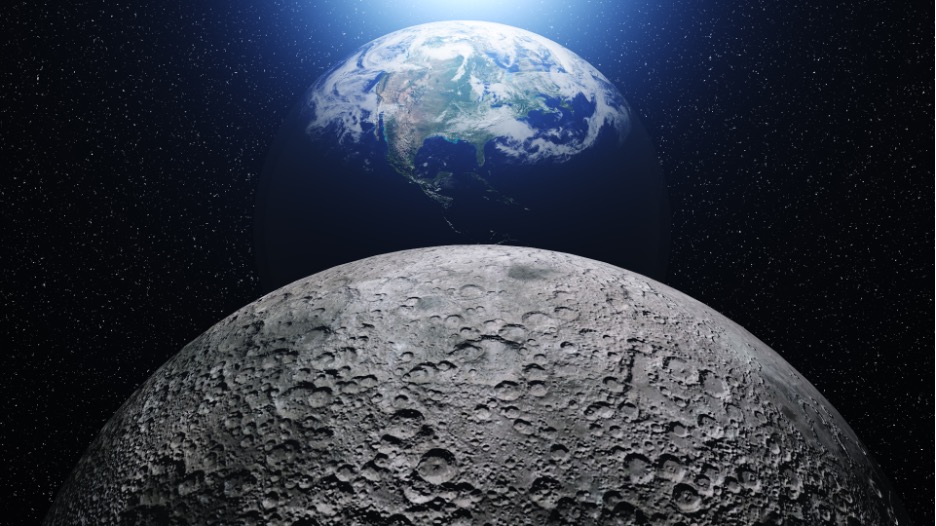
Our Earth is not the only celestial body in the solar system that has its own satellite — the Moon. You probably know that five more planets and even some dwarf planets have similar attendants. What you probably do not know is how many planet satellites are out there. To date, the list of moons has over 200 names, but scientists continue to discover more and more. In this article, we will talk about the most mysterious moons in the Solar system.
How many moons are in our Solar system?
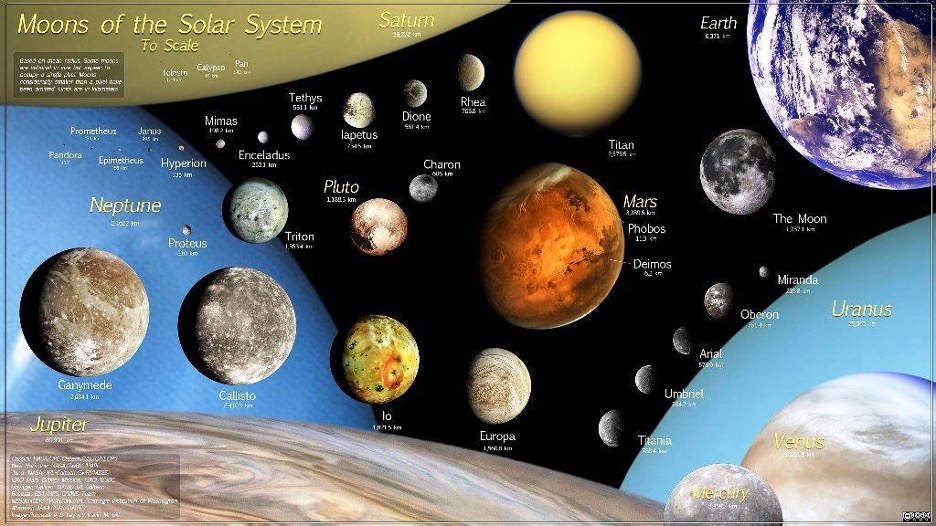
Satellites are solid celestial bodies of various densities, most of which are completely devoid of atmosphere and water. Their main mass was formed from disks of cosmic gases and dust. Sometimes planets captured smaller objects that fell into their gravitational field, which later became their satellites.
In total, our solar system has more than 200 natural satellites, but the number of moons for each planet in the solar system varies. Earth has only one, Mars has two, Mercury and Venus do not have them at all, and the gas giants boast dozens (63 for Jupiter, 49 for Saturn, 27 for Uranus, and 13 for Neptune).
The satellites differ in how they were formed, their environmental conditions, size, mass, orbits, and other parameters, which is why each of them is unique. What they all have in common is that satellites are poorly investigated and, so, are of great interest. Despite the abundant numbers, though, one can single out a few that deserve special attention.
The biggest moons in the Solar system
Ganymede
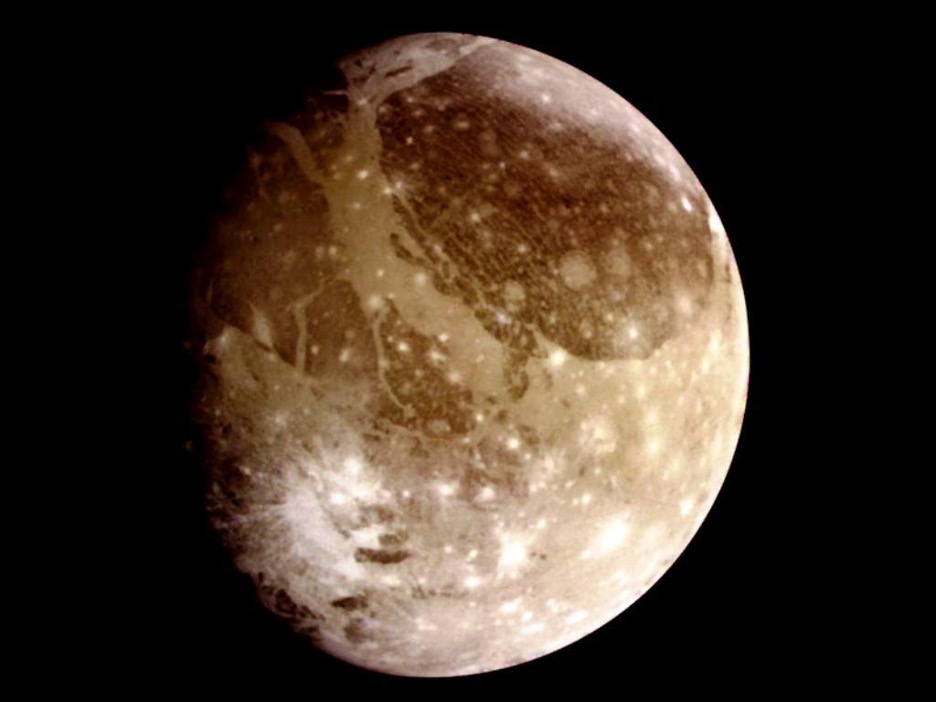
This satellite of Jupiter is a giant among the other moons. It is so large that it has its own sufficiently strong magnetic field, although its mass is relatively small. If Ganymede were in a closer orbit to the Sun, it could become a planet with a beautiful aura, which would not be overshadowed by any pictures of all the moons in the solar system.
Despite its huge diameter (over 5 thousand km), Ganymede’s density is only double the density of water — which by the way, is 50% of this satellite’s composition. Huge ice craters were found on Ganymede; its surface is heated by a hot inner core.
Titan

This is the most mysterious object among Saturn’s moons. It is not much smaller than Ganymede but still slightly larger than Mercury. There are liquid lakes of methane on the surface, but it is very difficult to look through its rather dense atmosphere. By the way, Ganymede’s atymosphere consists mainly of nitrogen, like ours, but its pressure is two-thirds higher.
Titan is little studied, but there are hydrocarbons on it that can become the basis for the development of primitive life, even though this moon has terribly low temperatures (-178 °C).
The smallest moons in the solar system
Dactyl
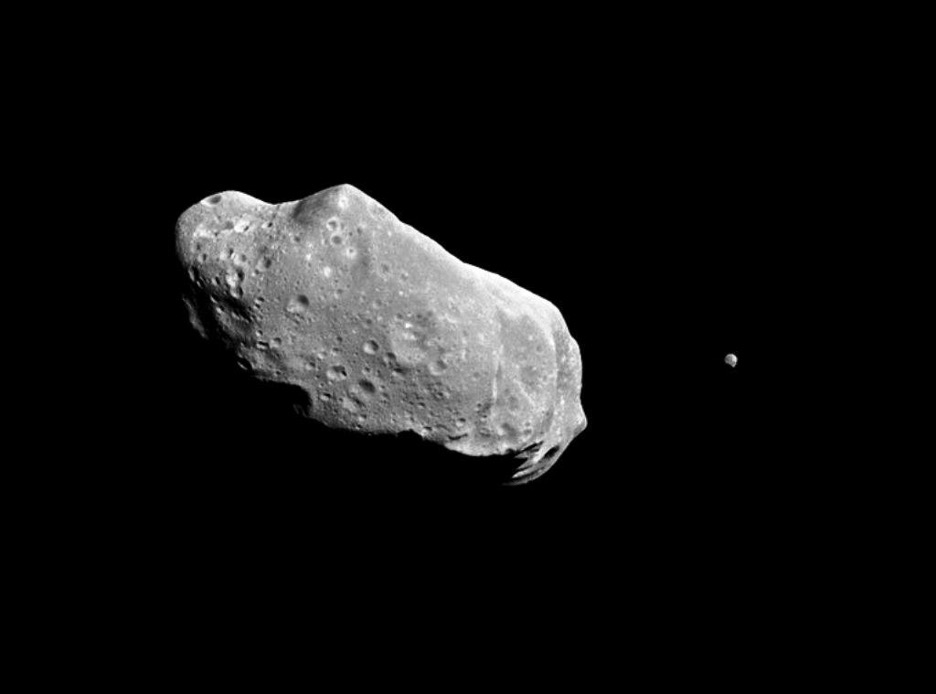
The satellite, just a mile wide, is surprising in that it orbits an asteroid (Ida) rather than a planet. This “egg-shaped” object, measuring 1.6×1.4×1.2 kilometres, may have appeared as a result of the destruction of the parent body of Koronis or a strong blow to Ida.
The entire Dactyl surface is covered with craters, two of which have received their own names (Acmon and Calmis). The spheroidal shape indicates fairly strong gravity despite its small size.
S/2009 S1
This satellite of Saturn is so small that it does not even appear among the names of moons in the solar system. Its diameter is only 300 m, so it would be more correct to consider it a long-lived solid body. S/2009 S1 is located approximately 650 km from the edge of the B ring and protrudes 150 m above its plane. Neither the period of revolution, the mass, nor its density is known so far.
The most beautiful, wayward and unique moons of the planets in the solar system
Europa

The surface of this satellite ofJupiter is the most even, so it looks the most organic from a distance. Europa is close in size to our Moon. There are no mountains, volcanoes, or craters on it, except for small hills. It is completely covered with frozen water, and it contains two or three times as much water as Earth. The depth of this ocean is about 100 km, and its bottom area, according to scientists, even has active geysers.
Europa is subject to the gas giant’s powerful gravity more than any other satellite on the list of Jupiter’s moons, which causes its hard ice to crack. Scientists suggest that there must be a source of heat inside, as well as carbon dioxide and oxygen in its rarefied atmosphere.
Enceladus
The ice moon, as it is also called, is a unique phenomenon on the list of all Saturn’s moons. The thing is, sunlight is almost completely reflected from its ice geysers.
Water vapour is concentrated in a geothermal area known as the “Tiger Stripes”. The source of heat is probably tidal forces heating the core and causing geological activity.
Rhea
Unlike most moons on planets of the solar system, this one has a magnificent desert crater landscape with temperatures dropping to -220 °C in the shade. The surface is covered with sulphur, but there is oxygen in the atmosphere.
As the satellite passes through Saturn’s magnetosphere, the energetic particles on its ice’s surface react and break apart, releasing the gas into the atmosphere. It is believed that in the distant future, increased levels of oxygen can cause more complex chemical processes in the atmosphere and on the surface.
Nereid
This satellite has the most eccentric orbit among all the moons in the solar system. It is extremely elongated, so the celestial body first approaches Neptune up to 6,000 km, then moves away from it to 841,000 km. The strange movement has given rise to the hypothesis that this object was captured from the Kuiper Belt.
Janus and Epimetheus
These two irregularly shaped satellites move around Saturn in almost the same trajectory, as if dancing. There are only 50 km between their almost circular orbits, and about once every four years, they change places due to the interaction of gravitational fields. Perhaps they were once whole but somehow separated. This probably happened after a collision with a large meteor.
Pan
This tiny satellite on the list of Saturn’s moons with a diameter of just 14 km was discovered by the Voyager-2 probe, which took a picture of the planet’s innermost rings in 1990. The satellite is interesting for its saucer-shaped form.
As it turns out, it is Pan that affects the particles in the ring system, creating curves known as trails. When fast-moving particles pass by, they get a gravitational “push” and gather together to form waves.
The ugliest and most terrible moons in the Solar system
Miranda
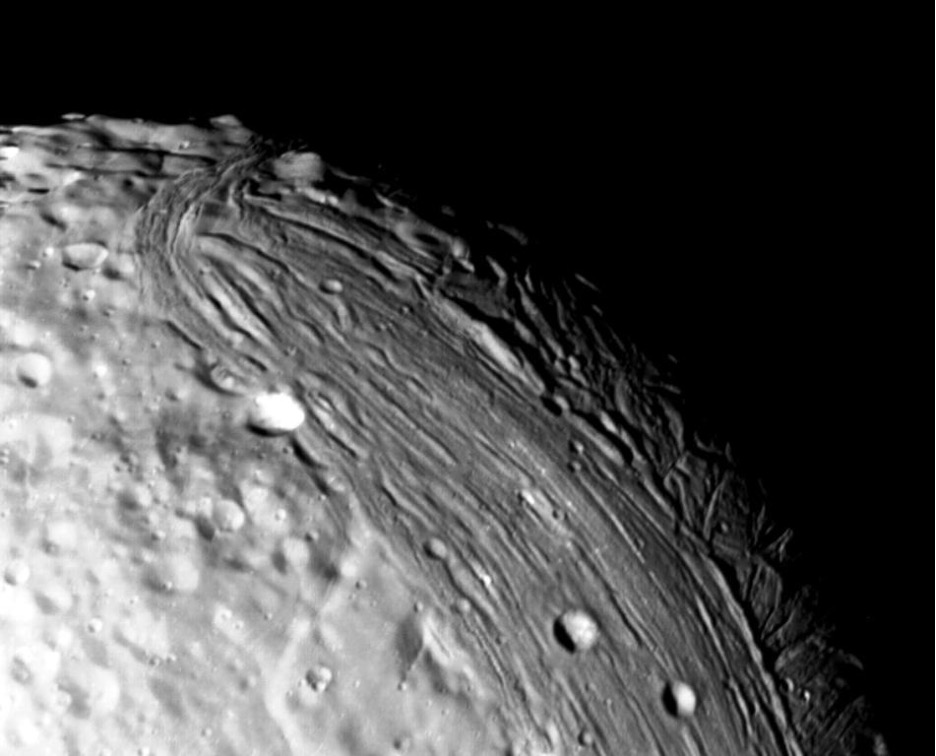
This object is the smallest of Uranus’ satellites and can be compared to an ugly duckling. It looks as if assembled from the remains of some other celestial bodies, which is an awkward sight. By the way, its name is taken from the play “The Tempest” by W. Shakespeare. And it looks like the elements have never stopped raging here.
The surface of Miranda has large ice inclusions and is covered with gorges and cracks of great depth. One such rock is the 20-km-high Verona Rupes. And it is located on a satellite with a diameter of only 472 km! Among all the moons of the solar system, this one has all the geological forms that are represented on the terrestrial planets. Also, it is very likely that some areas have changed their appearance at least five times.
Io
Volcanoes constantly erupt on this satellite of Jupiter (there are about 400 of them), but there are almost no craters because they are immediately filled with new lava. However, there are peaks several times higher than Everest, lava lakes, and floodplains of liquid rocks. Scientists suggest that it is heat-resistant silicon and sulfur.
The inner surface of this truly terrible satellite is heated by radioactive activity and electricity. Powerful currents inside arise due to the strongest tides under the influence of Jupiter’s gravitational field, and the satellite always faces its planet with the same side.
Potentially habitable moons of the planets in our solar system
Let’s say right away that scientists have identified several such objects, but we will talk about the most promising from this point of view.
Triton
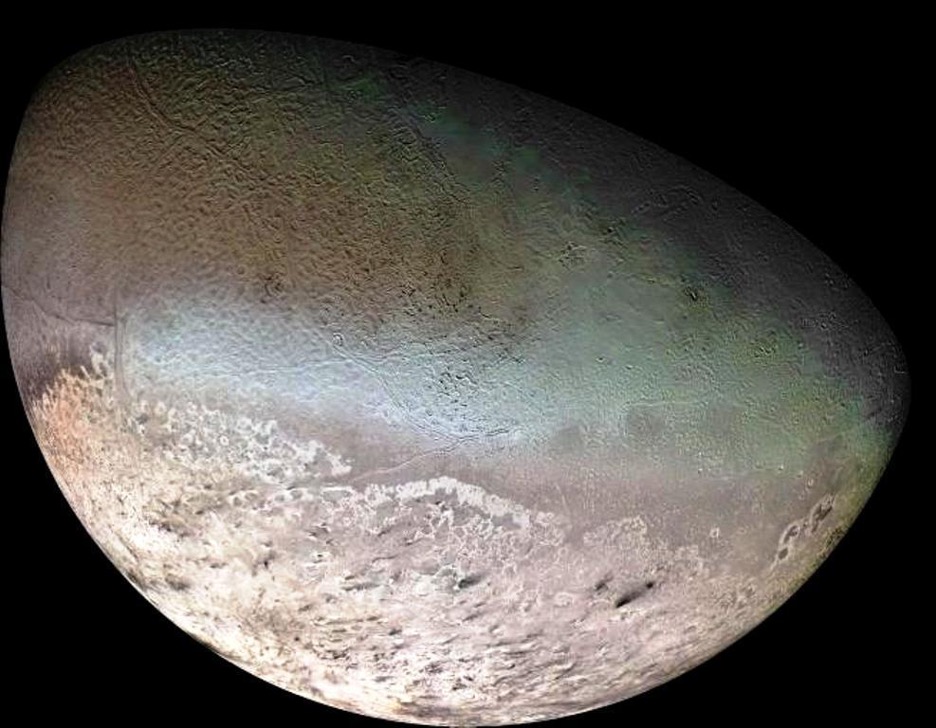
The largest Moon of Neptune is the only one of its kind, as it rotates in a retrograde direction. Also, its orbit makes it possible to claim that Triton was once a planet in its own right.
Triton is covered with ice ─ blue-green where it contains nitrogen or reddish, where iron impurities are present. Frozen nitrogen gives a highly reflective surface covered with cracks that appeared as a result of a cryovolcanic activity. Scientists believe that thanks to the nitrogen atmosphere, Triton may become habitable in the future. In the near future, NASA has planned the Triton Hopper mission to study the satellite in more detail. So far, the only space probe to explore Triton up close was Voyager 2, but that was in 1989.
Of course, there are many more moons of the Solar system, but we decided to focus on thirteen of the most noteworthy, in our opinion. Want to know more about space and its residents? Explore Orbital Today!
![Not Only Eclipse: Last Week In Best Astrophotos [5-12 April] Not Only Eclipse: Last Week In Best Astrophotos [5-12 April]](https://orbitaltoday.com/wp-content/uploads/2024/04/Veil-Nebula-300x205.jpg)

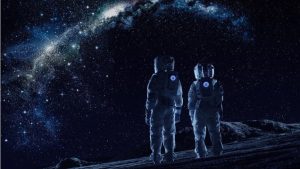



Thank you for your comment! It will be visible on the site after moderation.